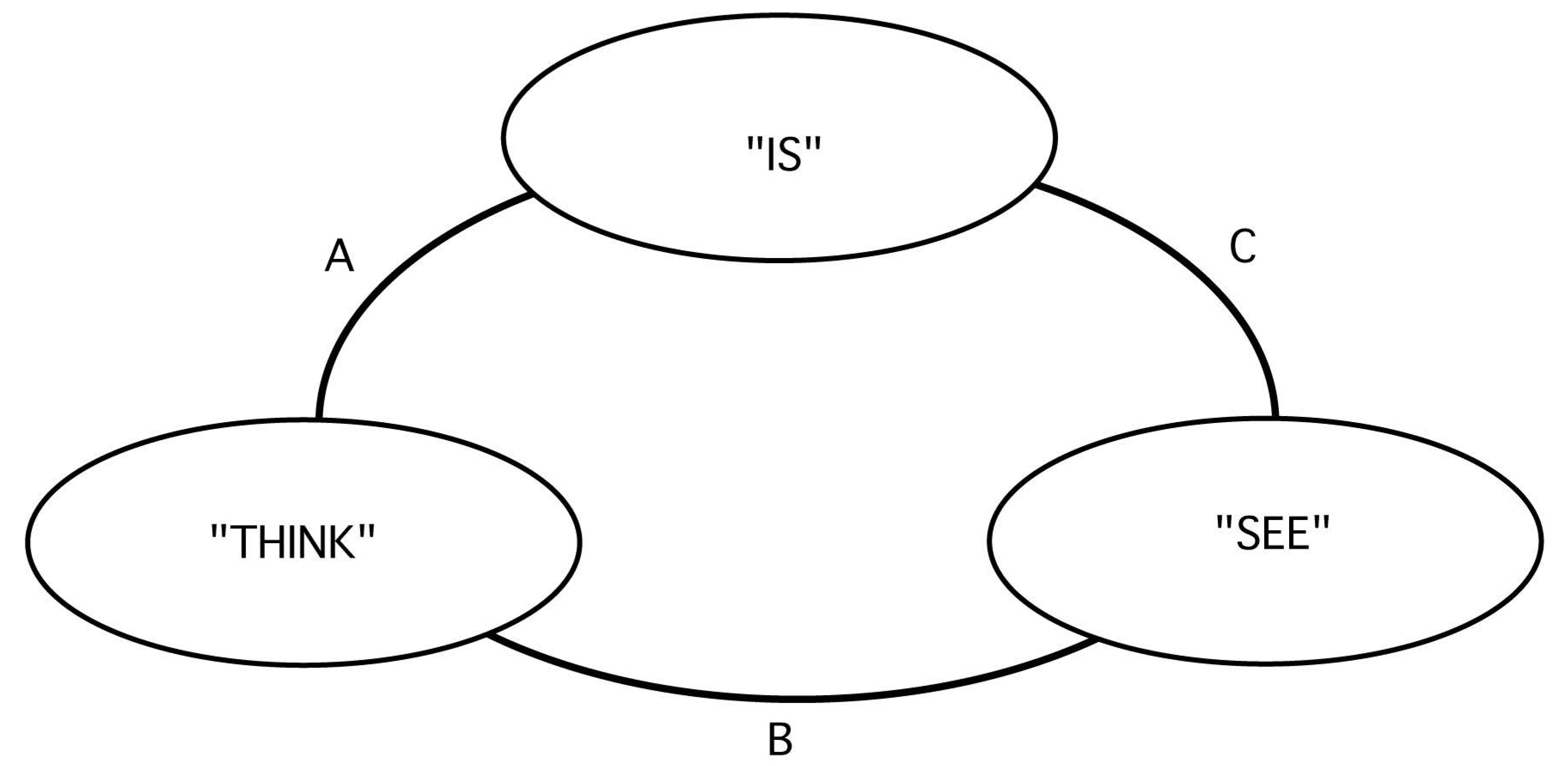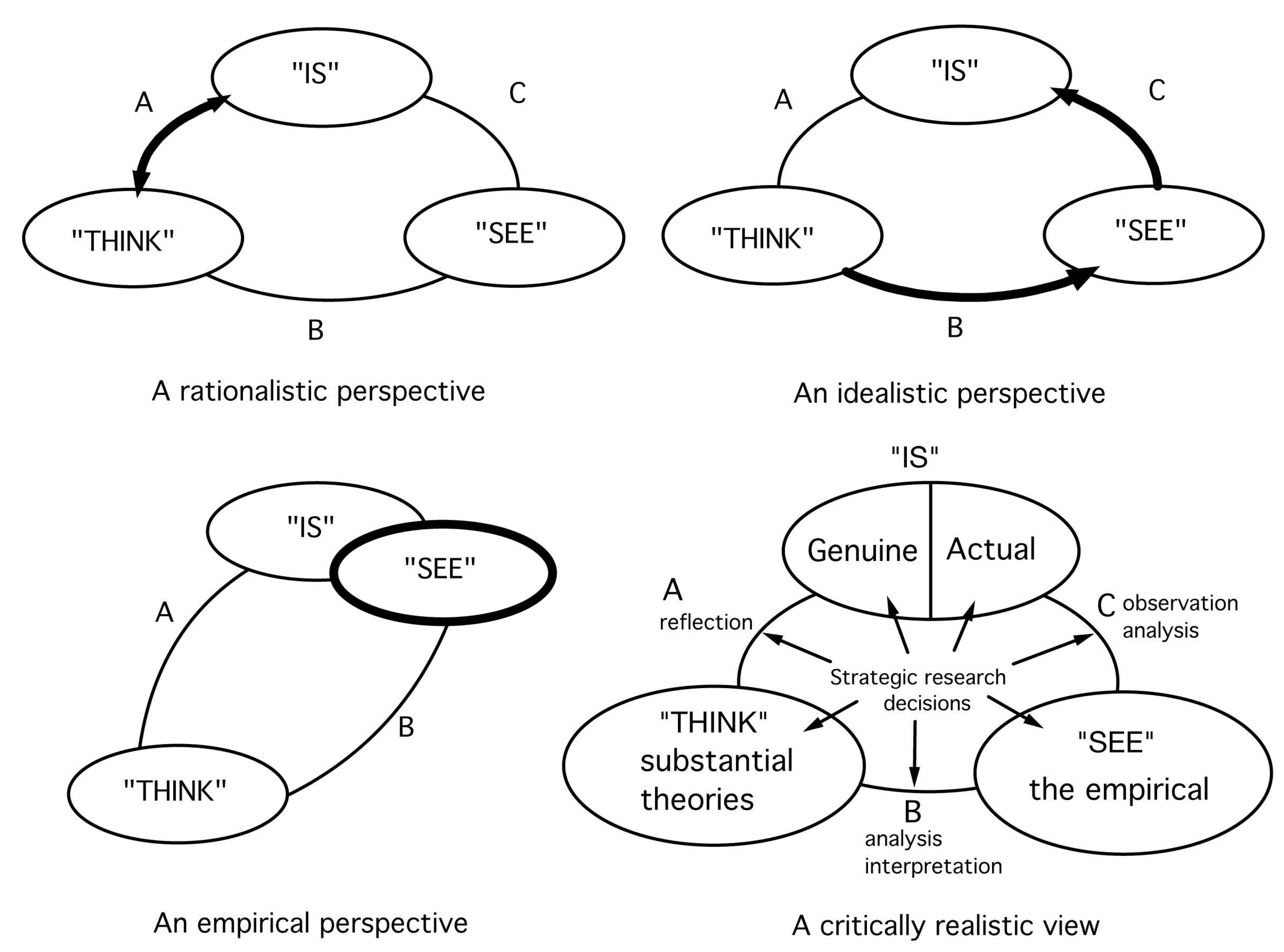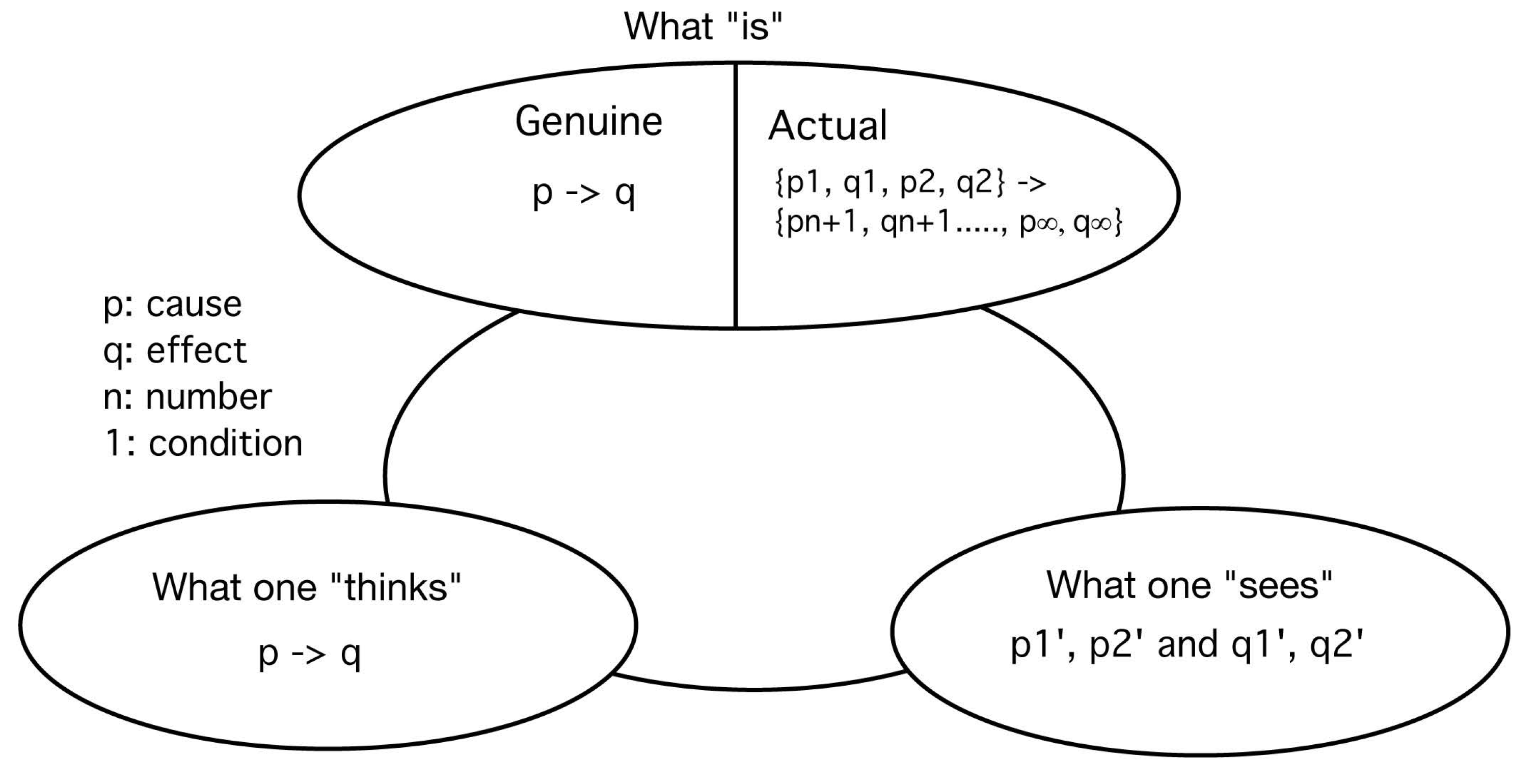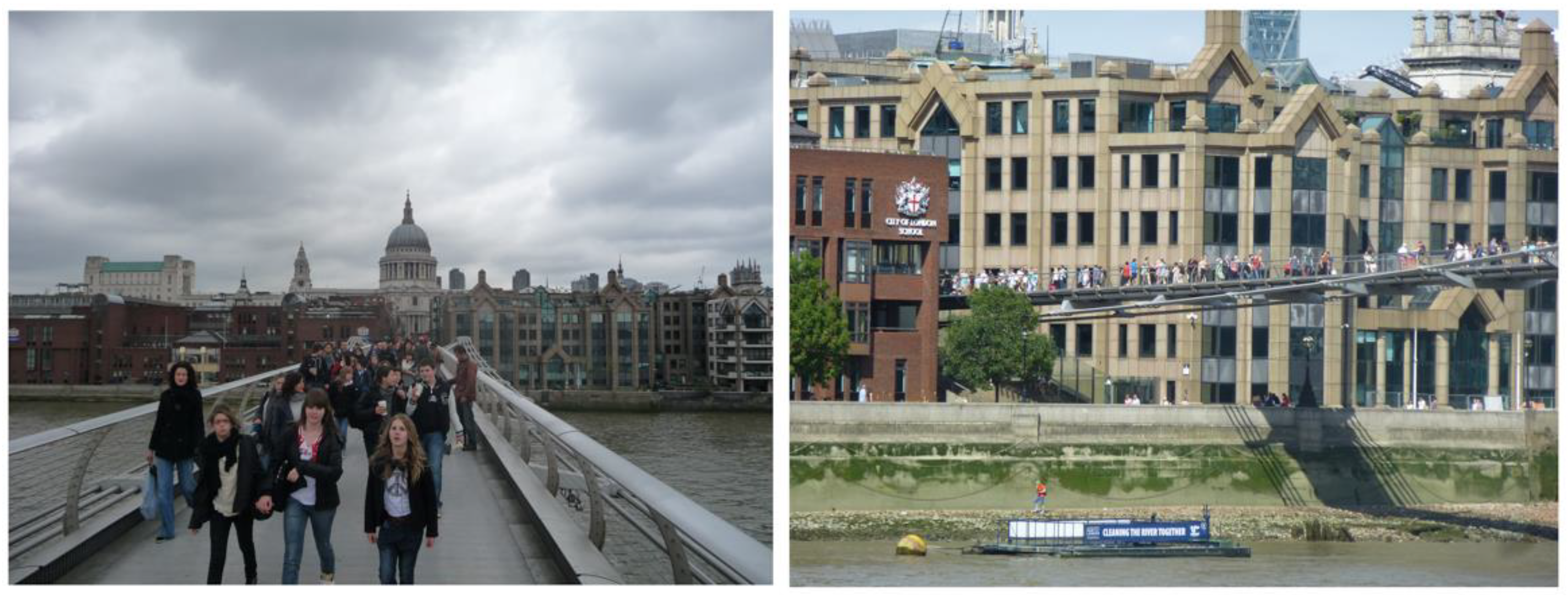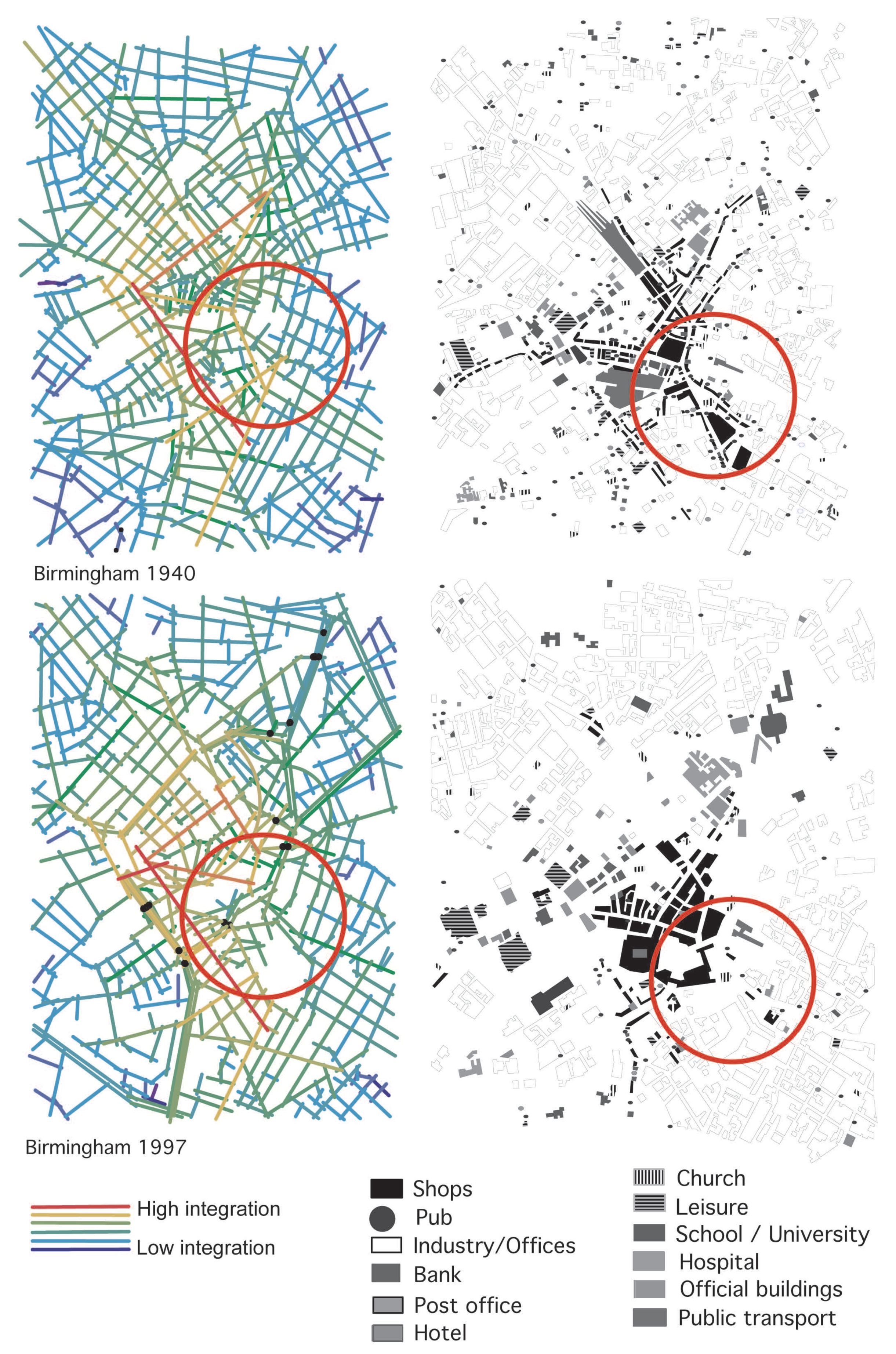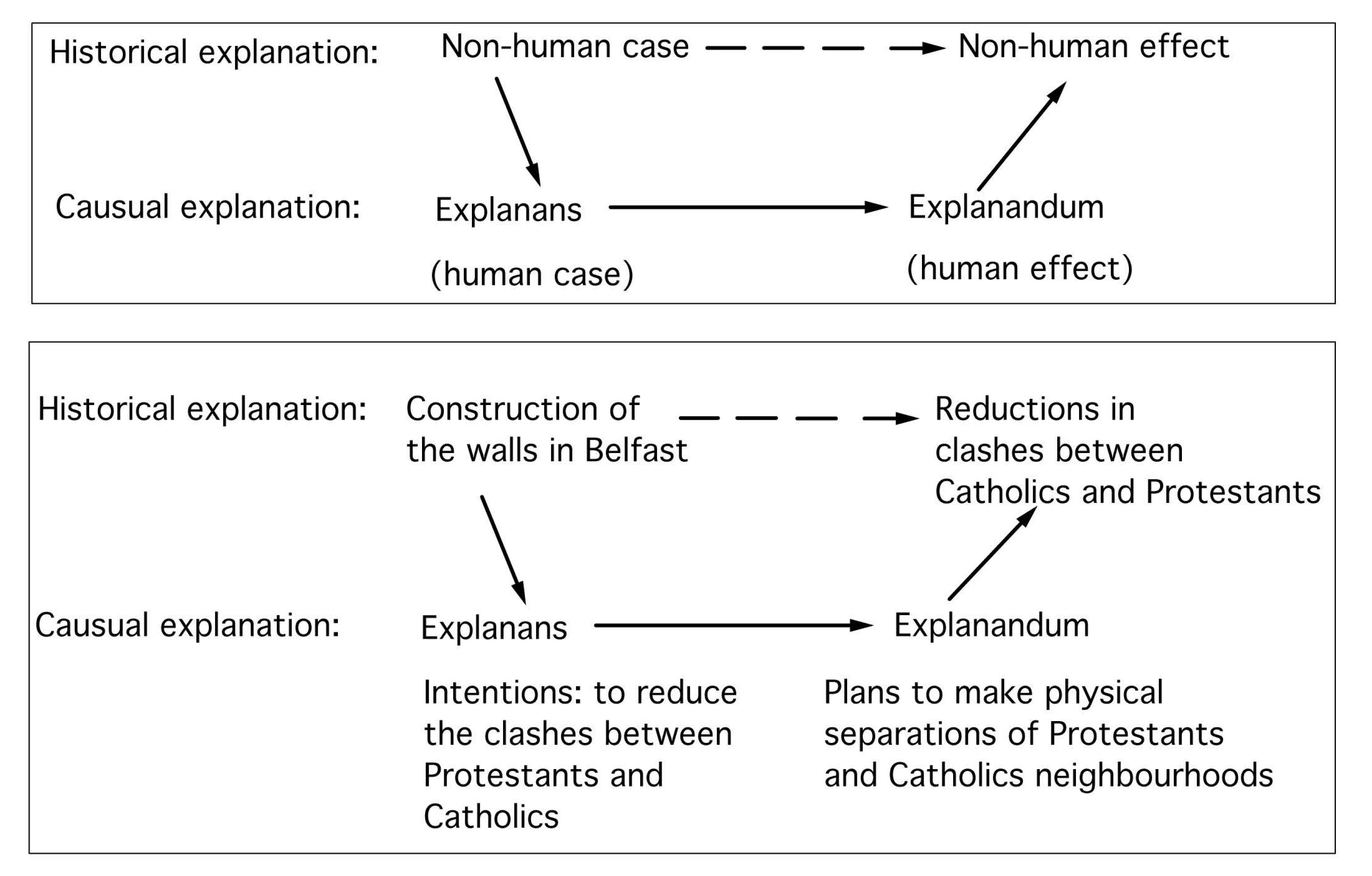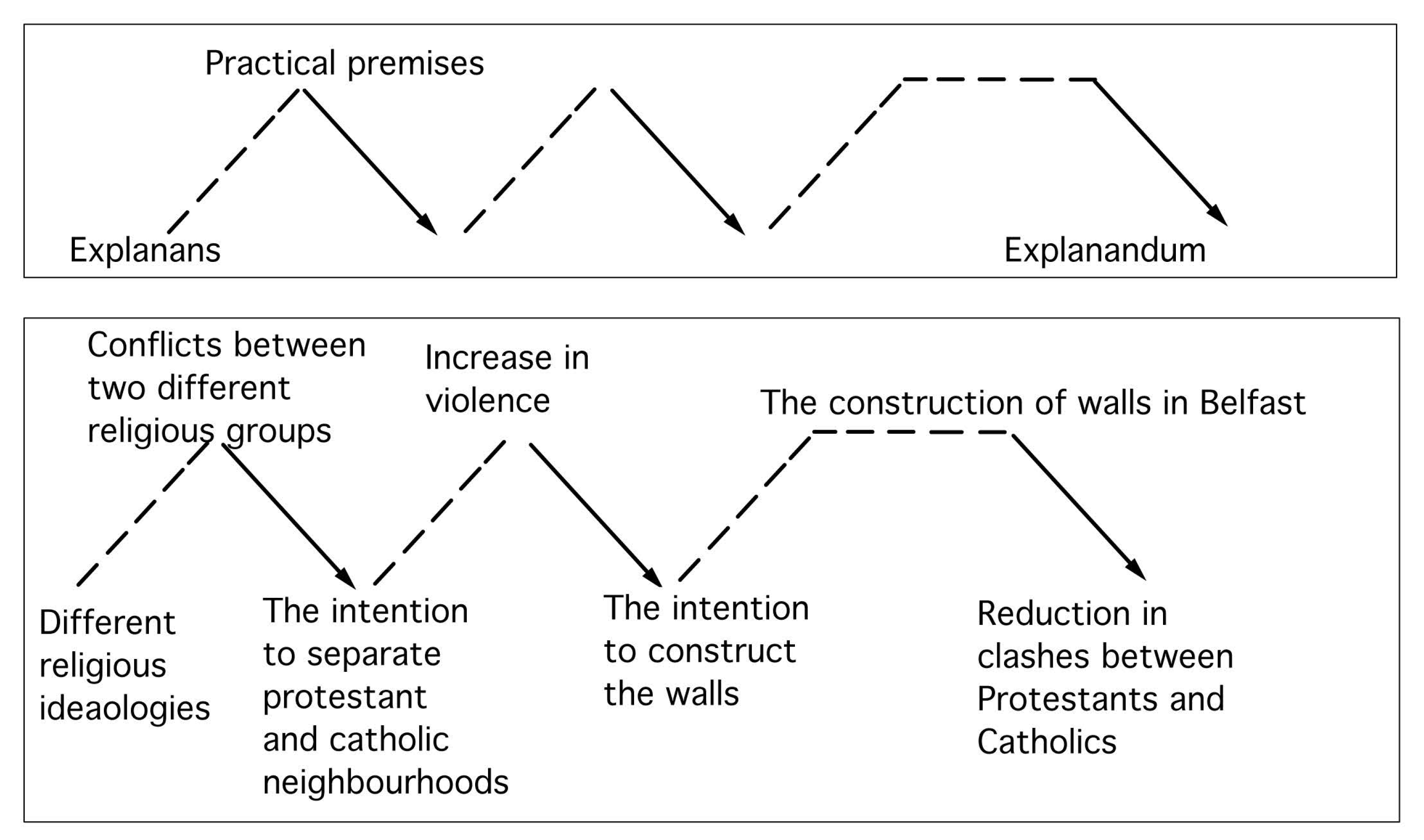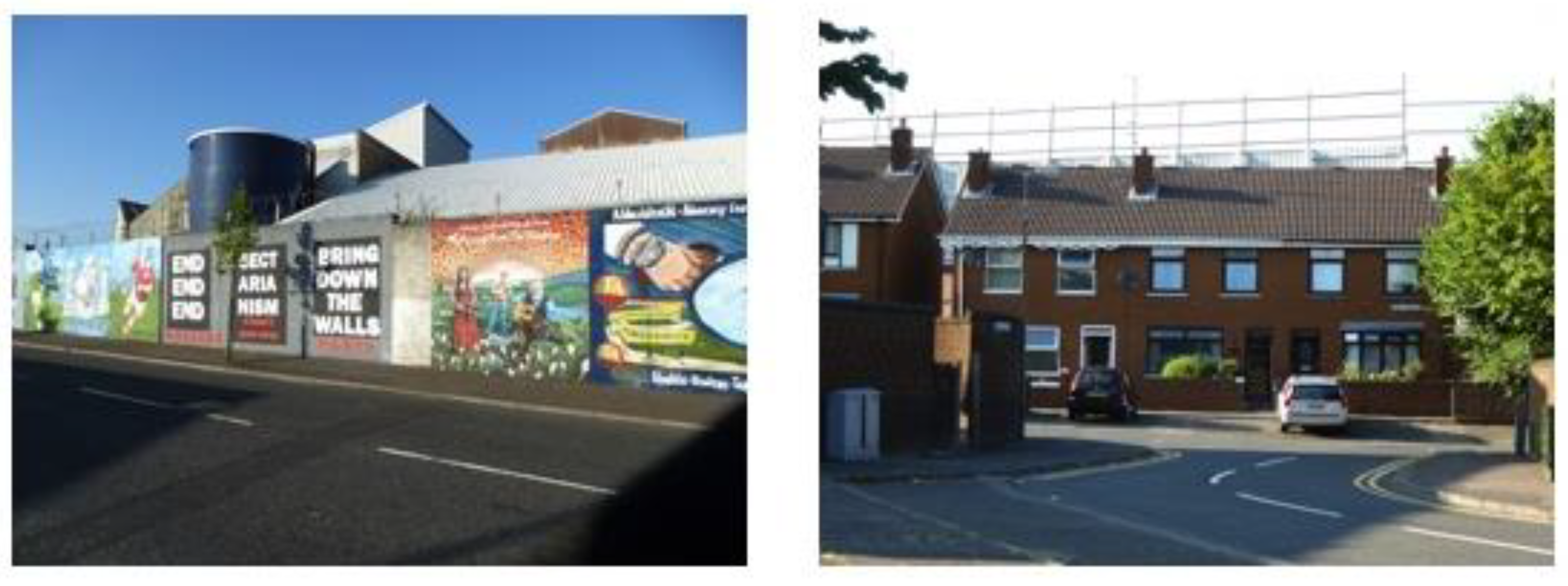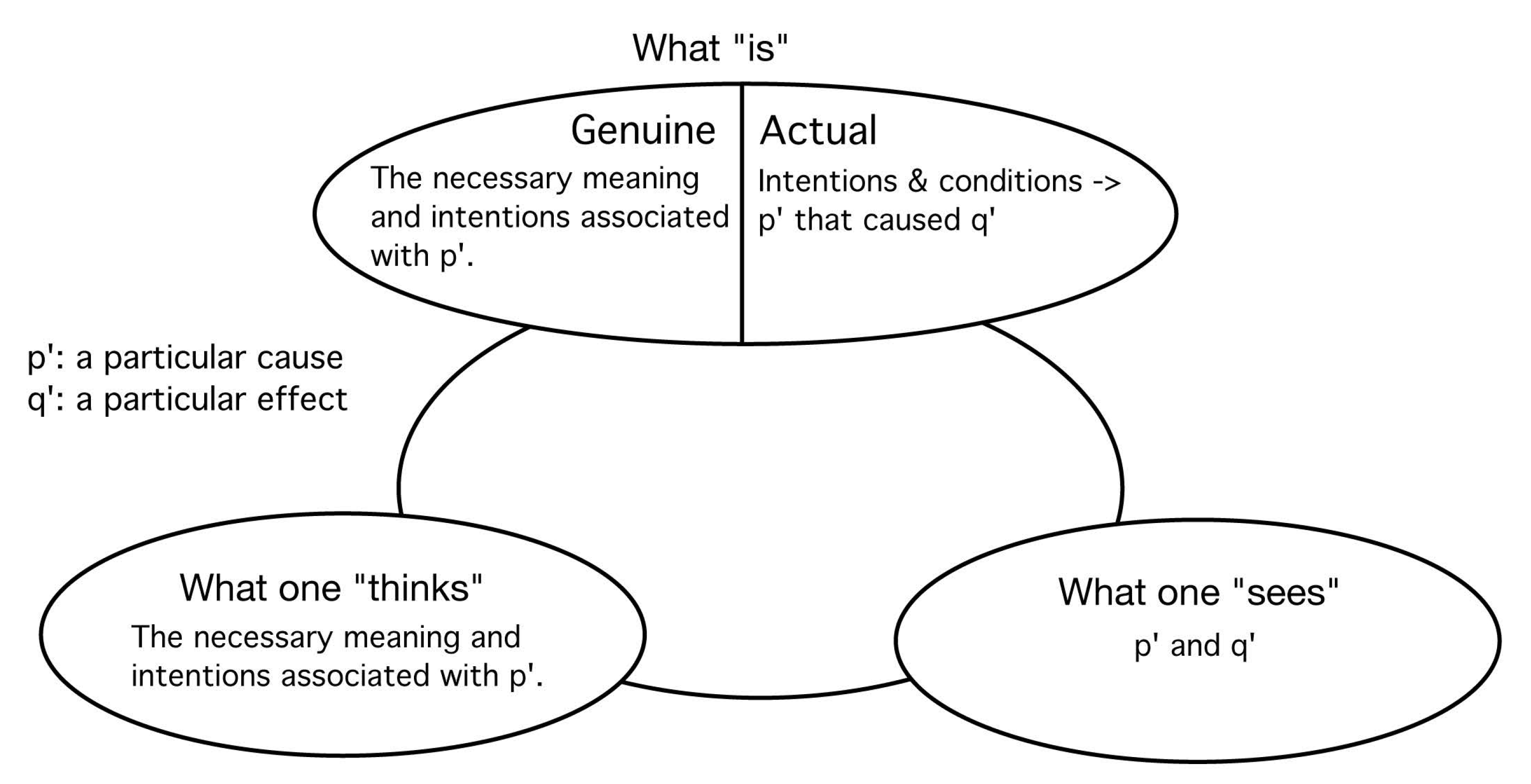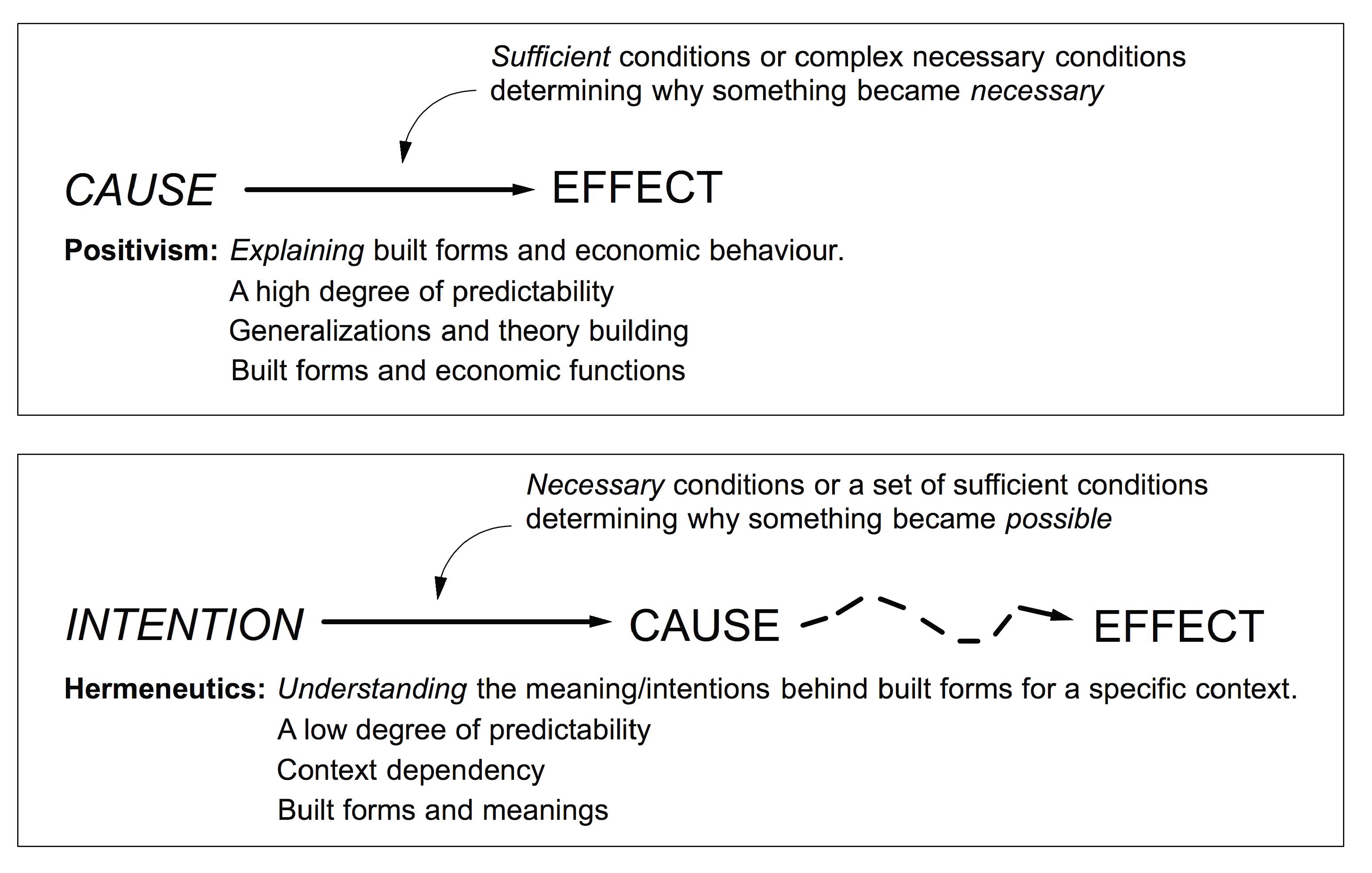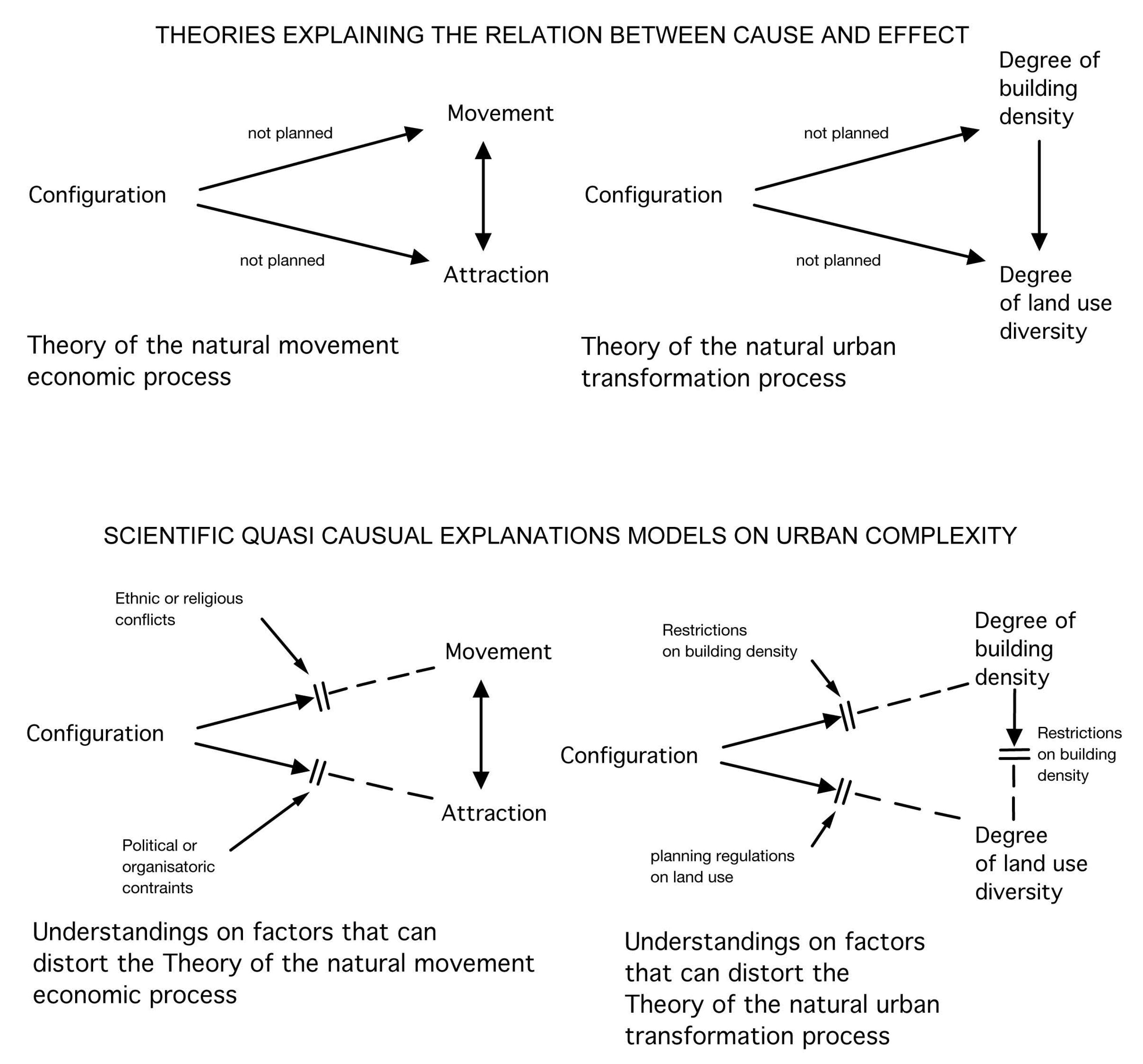1. Introduction
The planning and design of sustainable cities and communities in line with the United Nations sustainable development goal 11, ‘Sustainable cities and communities’, yields operational descriptive theories on built environments. These theories need to have explanatory power, be empirically supported and have a high level of precision. In recent decades, however, access to big data and strong software capabilities has enabled complex spatial analyses that apply place-bound socio-economic data to large cities, metropolitan areas and entire regions. The current challenge is to use the extensive body of existing empirical data to build descriptive theories on the functioning of built environments from a spatial perspective [
1]. The presence of vaguely formulated theories within urban studies can be attributed to imprecisions relating to spatial elements and an inadequate understanding of the differences between two established scientific approaches: positivism and hermeneutics. Addressing this gap in theory building and eliciting an understanding of particular phenomena requires the application of Von Wright’s modal logics [
2], entailing precise causal and intentional explanatory models.
However, a complication is that research on the built environment, which focuses on urban artefacts, forms and space, is interdisciplinary and entails an overlap of the human, social and natural sciences. Such research focuses on the relationship between society, its members’ cognitive abilities and the physical ‘framework’ in which all of these activities take place. Therefore, research on the built environment requires both a hermeneutic approach (intentional explanations) and a positivist one (causal explanations).
Research on built environments, which emerged in the late nineteenth century, is relatively new, in contrast with the theory of science, which dates back to 2000 BC. During the last century, three research directions relating to the built environment were established: (1) urban morphology, (2) place-phenomenology, and (3) research on urban networks or spatial configuration. Prominent contributions within the literature on urban morphology include Muratori [
3], Caniggia and Maffei [
4], Strappa [
5], Moudon [
6], Whitehand [
7], MRG Conzen [
8], MP Conzen [
9,
10], Gerosa [
11] and Rådberg [
12], and from the French school, which emerged in the 1960s, the works of Panerai, Castex, DePaule and Samuels [
13]. Seminal contributions within the literature on place-phenomenology include Norberg-Schulz [
14], Lynch [
15], Simon [
16] and Cullen [
17], whereas well-known contributions within the literature on urban street networks and spatial configuration include Hillier and Hanson [
18] and Hillier [
19] on space syntax, and Marshall [
20] and Batty [
21] on other network analyses. Each of the above research directions emphasizes the physical aspects of the built environment and its relationship to society, focusing on topics such as behaviour, cognitive issues, meaning and memory.
Compared with other established research traditions, space syntax is a relatively new area of research that was pioneered in the 1970s. The space syntax method consists in calculating various degrees of spatial integration of urban spaces shaped by physical obstacles on various scale levels—from the building level up to large metropolises. The success of the space syntax method lies in its precise definition of the spatial elements of the built environment, which are clearly distinguished from interpretations of the meaning and memories attached to them. Consequently, spatial analyses that apply this method demonstrate a high degree of objectivity, testability and falsifiability. Over the years, various techniques have evolved for analysing spatial inter-relationships and the results of spatial analyses can be independently compared with socio-economic data. This method has been validated through its systematic application, strong empirical support and explanatory power. Some generalizations and theories have emerged through the worldwide application of space syntax [
1].
In light of the above discussion, we apply a basic theory of science perspective here to explore challenges for theory building relating to space syntax. Whereas most research in the field of urban morphology and place-phenomenology is aligned with the hermeneutic research tradition, space syntax research combines both positivist and hermeneutic approaches. Applying Von Wright’s modal logics and drawing on Bhaskar’s [
22] conception of critical realism, we explore the possibilities and limitations associated with theory building in space syntax research. In the following section, we outline the background of the two established research traditions: positivism and hermeneutics. In the third section, we introduce Bhaskar’s conception of critical realism and the causal and intentional explanatory models entailed in Von Wright’s modal logics [
2]. In the fourth section, we explore how modal logics and the critical realism perspective can be applied in space syntax research to explain the relationship between cause and effect. We subsequently explore how these same models can be applied in space syntax research to understand the intentions underlying a cause. In the final section, we discuss the explanatory power of existing theories and the challenges and limitations associated with building new ones.
2. Positivism and Hermeneutics: Two Established Research Traditions
The positivist research tradition, which is rooted in the natural sciences, focuses primarily on objects disassociated from intentions and meanings. Operational theories are developed through experimentation, observations, systematic testing and technical interventions. These theories offer insights into the nature of objects and their technical applications. Most of the explanatory models applied in this field, such as the hypothetico-deductive method, hinge on causes and effects [
23] (pp. 94, 99). The successful application of these models within the natural sciences has prompted several unsuccessful attempts to replicate positivist approaches within the human and social sciences.
In the 1850s, German researcher Johann Gustav Droysen noted that the aim of the natural sciences is to explain a phenomenon, whereas in the human and social sciences, it is to understand a phenomenon. Here, the aim is to understand the motives and intentions underlying the actions of the individuals concerned, the action itself and the outcomes of these actions [
23] (p. 95). Most studies conducted within the fields of urban morphology and place-phenomenology have sought to advance our understanding of the built form and its associated meanings or memories.
Although the concept of hermeneutics was introduced in the early seventeenth century, it did not evolve into a research tradition until the nineteenth century, as a result of the work of German scholars Friedrich Schleiermacher and Wilhelm Dilthey. The hypothetico-deductive method is applied in hermeneutical studies to texts or objects with attached meanings in order to understand or derive their original meanings and underlying human intentions. Thus, hermeneutics requires an interpretive approach.
From the 1960s onwards, a new hermeneutic direction emerged in the work of Hans-Georg Gadamer and Jürgen Habermas. Gadamer introduced the concept of ‘Horizontverschmelzung’ (a ‘fusion of horizons’). This concept is defined as the sum of an individual’s impressions and attitudes at a particular moment in time, both conscious and unconscious, when not focusing [
23] (p. 101). The difference between the traditional and newer versions of hermeneutics lies in the fact that scholars applying the latter acknowledge that the researcher can never be entirely free of their own horizon of understanding. Gadamer refers to this dilemma as ‘the universal challenge in hermeneutics’. In general, the hermeneutic method entails interpreting available materials, the meanings and intentions underlying the object produced, and past and present society within interpretive circles. The fusion of horizons expands through these reflections [
23] (p. 105).
In sum, interpretations of the meanings and memories attached to urban artefacts and patterns, or developing an understanding of society over time—all of which are connected to researchers’ own attitudes—are critical components of urban research. Hermeneutic approaches have also been applied within space syntax research, especially in relation to disciplines and themes that impact urban space, such as history and archaeology, anthropology and cultural traditions and studies on socio-environmental conflict, as well as spatially oriented religious activities [
24]. Because predictability is not inherent in these fields, they lack theories or explanatory models with predictive power.
Given that research on the built environment deals with the physical environment as well as the meanings, intentions and actions of human beings, both research traditions are applicable within space syntax studies for the following reasons. Firstly, according to this approach, spatial elements are defined separately from human intentions and attached memories. Secondly, the calculation methods are confined to spatial objects. Therefore, space syntax research is able to generate positivist explanatory models for exploring space and spatial relationships. An example is Hillier’s four theories on spatial combinatorics [
19] (see
Section 4 for an in-depth explanation). The correlation of space syntax results with socio-economic data requires an understanding of human intentions and actions and therefore includes a hermeneutic approach. However, in cases where human intentions are unambiguous, positivist approaches can be used, as demonstrated in
Section 4 of this paper.
Both research traditions, which entail different explanatory models, are applicable within space syntax research. In line with the positivist tradition, causal explanatory models in particular can be derived in cases where human intentions relate to time and economic efficiency. In the following section, we explore the explanatory power of both research traditions using Von Wright’s modal logics. We examine the compatibility of these models with Bhaskar’s conception of what individuals think about reality, what they see and what the de facto reality is. Modal logics are applied because of their high level of precision, enabling an exploration of the extent to which a statement fits within a positivist or hermeneutic explanatory model.
3. The Critical Realism Perspective and Modal Logics
Bhaskar [
22] developed critical realism as a philosophy that is centred on ontology (the study of being). He described three levels of research. The first ‘is’ level concerns reality insofar as a researcher intends to know about it, understand it and predict its further course. The second ‘see’ level concerns the perception and observation of reality. However, this still leaves the issue of gathering accurate information about reality for the application of scientific theories. Thus, the third level is the ‘think’ level, comprising notions, ideas and thoughts about reality. Troye [
25] (p. 33) has shown the basic interdependences between these three levels (
Figure 1).
Bhaskar [
26] (pp. 14–20) identified four epistemological approaches that highlight the interrelations between these three levels of research:
Rationalism: the researcher as thinker,
Idealism: the researcher as inventor and creator,
Empiricism: the researcher as observer,
Realism and critical realism: the researcher as critical thinker, inventor and discoverer.
Rationalism evidently favours thought. This line of research emerged from concepts of the built environment, its structures and order. Because reality is perceived as a conceptual issue, observation is accorded low priority. Cartesian philosophy, grounded in Descartes’ thesis of Cogito ergo sum (I think, therefore I am), exemplifies the rationalist approach [
25] (p. 34). This approach is depicted in the figure below (
Figure 2) by the bold curved line in the top-left image, connecting the first ‘is’ level with the third ‘think’ level.
An idealistic perspective implies that ideas held about a phenomenon are part of reality. For instance, in Hegel’s idealism, reality is transformed by speculative ideas held about it. The ideas held about the spatial elements of a built environment, for example, are constitutive of it. Accordingly, the acknowledgement of truth is not simply the outcome of observation; it is also contingent on the scientist’s grasp and vision of reality [
25] (pp. 36–46). In the top-right image in
Figure 2, the bold lines marked as B and C that extend from the ‘think’ to the ‘see’ level, and further to the ‘is’ level, illustrate this approach.
According to Bhaskar, an empiricist epistemology is premised on the view that reality is conceived in terms of the observer’s perceptions. Whereas reality is not directly accessible for the rationalist or the idealist, from an empirical perspective, truth is the final outcome of perceptual data received by the observer [
25] (pp. 46–55). This approach is illustrated by the converging ‘see’ and ‘is’ levels in the bottom-left image in
Figure 2.
Finally, realism and critical realism, which account for the development of scientific theories, include aspects of all three of the abovementioned models. This suggests that the search for empirical evidence should account for both the rationalistic and idealistic stages of theory development. Reality, represented by the ‘is’ level, is subdivided into two components: one that is genuine and one that is actual. The genuine part comprises invisible structures and systems, whereas the actual component relates to the ways in which reality presents itself through observation and experience (
Figure 2, bottom-right image) [
26].
Most research on the built environment is aligned with the critical realism model. Rationalism is entailed in hypothesis formulation, whereas idealistic and empirical perspectives feature in the invention of new research approaches and empirical testing, respectively. Although Troye integrated causal explanatory models into Bhaskar’s conception, these models lack precision and are not applicable to intentional explanatory models. Therefore, the incorporation of Von Wright’s modal logics [
2] into Bhaskar’s conception of critical realism [
22] can shed light on the possibilities and limitations of theory building relating to various topics in space syntax research. Interpretative statements within the hermeneutic tradition are necessary for an understanding of cultures, human behaviours and cognitive factors relating to urban space, whereas positivist statements can explain changes in urban space and their effects on movement flows and economic activities.
Von Wright clarified how the positivist and hermeneutic traditions respectively shape causal and intentional explanations. Each of these epistemological traditions imposes different structures and conditions on their explanatory models. How these models are built depends on how associated theories are established and how these models are applied to explain particular phenomena [
2] (pp. 1–4). In the positivist tradition, identification of the causes of certain phenomena is emphasized. Therefore, positivist research entails a high degree of predictability. The explanatory models applied in this type of research solely predict the effects of certain causative influences [
2] (p. 3). Most research conducted within the natural sciences is positivist, applying causal explanatory models.
By contrast, the hermeneutic tradition emphasizes explanations aimed at eliciting an understanding beyond the phenomena [
2] (p. 4). Most research within the human and social sciences belongs to the hermeneutic tradition and applies intentional explanatory models. Research on built environments entails a combination of both traditions, incorporating aspects of both the natural and social sciences. Therefore, it is necessary to explore and attempt to understand the potential and limitations of models that are embedded within both the hermeneutic and positivist traditions.
Von Wright’s explanatory models distinguish between necessary and sufficient conditions. Such conditions determine whether the explanatory model applies to hermeneutic or positivist research [
2] (p. 38). In this terminology, positivist causal explanations are simply referred to as ‘explanations’ and hermeneutic statements are described as ‘understandings’. ‘Explanations’ entail sufficient conditions accounting for the causes of certain effects. ‘Understandings’ result from an assessment of the necessary conditions reasonably associated with
causes, which precede their effects. The notion of time is a decisive, though certainly not sufficient, criterion for distinguishing between causes and effects [
2] (p. 41).
Von Wright’s modal logics can be incorporated into Bhaskar’s conception of critical realism. As shown in
Figure 3, Troye’s model depicts different explanatory levels that are derived from Bhaskar’s conception [
25] (p. 132). Thus, in
Figure 3, both cause
p and effect
q, including their interdependency, are embedded in the ‘is’ and ‘think’ levels. A specific cause and effect [
p1,
q1] relation is distinct from another specific cause and effect [
p2,
q2] relation at the ‘see’ level. There is no experience of a relationship between
p1,
p2 and
q1,
q2. However, the theoretical presuppositions within experiments that are performed, and subsequent reflection, enable the acquisition of knowledge regarding the relationship between
p and
q within the actual part of the ‘is’ level (
Figure 3). At this level, each specific state can be observed, and each separate cause (
p1 and
p2), with its matching effect (
q1 and
q2), can be perceived. By adding an invisible condition labelled +1, some presumptions can be made about the effect
qn from a future cause
pn (an ‘if, then’ relation). This presumption of future causes and effects is made on the basis of observations of existing causes and effects.
The model depicted in
Figure 3 is appropriate for explanations belonging to the positivist tradition. However, it is not adequate for hermeneutic research. By integrating Von Wright’s intentional explanation model into Bhaskar’s conception of critical realism, the explanatory power of hermeneutic research can be assessed. In the following section, we discuss the potential application of Von Wright’s explanatory models, incorporated within Bhaskar’s conception of critical realism, using statements drawn from space syntax research.
4. The Positivist Tradition: Cause-Effect Rationality in Space Syntax Research
Explaining or predicting the effects of given causes in line with the positivistic research tradition requires two things: firstly, studying the city as an object, free from human intentions and cultures, and secondly, taking into account only human intentions that are unambiguous, such as profit maximizing and time efficiency. In this section, we demonstrate how some existing space syntax theories that address spatial changes as the effects of physical interventions fit within von Wright’s positivist explanatory models. Until now, most space syntax research has sought to explain how a city is physically constituted, irrespective of human preconditions of causation. Accordingly, the built environment is perceived as an object consisting of a set of spaces that configures a spatial system. Each physical change in the built environment affects the configured spatial system. This research approach contrasts with those of urban morphology and place-phenomenology, in which understanding the human intentions behind the artefacts produced is a primary consideration.
At present, there are three theories based on space syntax research: the ‘theory of spatial combinatorics’ [
19] (chapter 8), the ‘theory of natural urban transformation processes’ [
27], and the ‘theory of natural movement’ [
28,
29] or the ‘theory of natural movement economic processes’ [
24,
30,
31,
32].
The theory of spatial combinatorics deals only with the spatial effects of various physical interventions, stated as follows:
Principle of centrality: a centrally placed object increases the topological depth more than one placed at the edge.
Principle of extension: partitioning a longer line increases topological depth more than partitioning a short line.
Principle of contiguity: large, continuous blocks increase topological depth more than smaller, separate blocks.
Principle of compactness: straight lines increase topological depth more than curved lines.
It is possible to predict human behavioural effects caused by contextual spatial changes in cases where intentions relating to human rationality are unambiguous. Market and other rationalities associated with time and cost efficiency entail unambiguous intentions [
24,
32], enabling the generation of explanations and theories that are aligned with the positivist research tradition.
A tentative theory of natural urban transformation processes that is derived from the natural movements of economic processes is formulated by Ye and van Nes [
27]. This theory posits that the spatial structure of a street network influences the degree of building density and the degree of multi-functional land use. A higher level of overall spatial integration of street networks on various scales corresponds to higher building densities (for both the Floor Space Index and the Gross Space Index) and greater diversity in land use. The spatial structure of a street network is conceived as the spatial framework of the socio-economic component of the built environment. The first assumptions regarding these correlations were proposed in 2012 [
33,
34] and finalized in 2014 [
27].
The most well-known space syntax theory, the ‘theory of natural movement’ [
28,
29] or the ‘theory of natural movement economic processes’ [
24,
30,
31,
32], states that the spatial structure of the built environment influences the flow of movement and the location of economic/commercial activities. The higher the spatial integration, the higher the flow of movement and the bigger the opportunities for various businesses. This theory is empirically supported by world-wide research [
24].
Causal explanatory models are considered suitable for assessing the explanatory power of both the theory of natural movements of economic processes and the theory of natural urban transformation processes. In the first instance, it is appropriate to identify the causes of events to be explained.
When applied in the context of Von Wright’s causal explanatory model, these preconditions allow for the following instantiation of a general explanatory model regarding cause and effect. This is illustrated by the following general (1) and context-dependent (2) examples:
Effect (consequences): The spatial configuration of an urban street network is changed.
Cause (reasons): A new movement route has been established.
Effect (consequences): The integration values of streets around the new Tate Art Gallery in London increased in 2000.
Cause (reasons): The construction of the Millennium Bridge changed the spatial configuration of the street network in London. If p is a necessary condition of q, then a new road link is a necessary condition for inducing a change in the spatial configuration system.
The above examples illustrate the explanatory power of research findings emerging from an exclusive focus on the physical aspects of the built environment. Moreover, when unambiguous human intentions are included in the analysis, both general and context-dependent examples work well. The underlying intentions of market rationality evidently include profit maximization and efficiency. Therefore, when a city’s spatial layout affects the efficient location of economic activities, a high degree of predictability is present.
Figure 4 shows two images from the Millennium Bridge.
4.1. Sufficient and Necessary Conditions
In general, the development of scientific theories aims to extend their degree of universality. Therefore, only general examples of research focusing on market rationality are presented here in relation to Von Wright’s explanatory model. We apply this model in relation to street network research below to examine whether a new movement route is, firstly, a sufficient condition, and secondly, a necessary condition for changing the spatial configuration of cities.
If p is a sufficient condition of q, then a new road link is a sufficient condition for inducing a change in the spatial configuration system.
If p is a necessary condition of q, then a new road link is a necessary condition for inducing a change in the spatial configuration system.
An essential positivist explanation model requires sufficient conditions for explaining the relationship between cause and effect. The explanatory power of research on street networks lies in identifying conditions that are sufficient for the occurrence of certain phenomena. In our example, a new road link effectively triggers changes in the given configuration of a spatial system. Moreover, other conditions (e.g., roadblocks or walls with closed gates) can result in a change in the spatial configuration. However, just one of these conditions is sufficient for bringing about changes in a city’s spatial configuration. In essence, research on street networks sets out conditions that are sufficient for inducing a change in the built environment.
A complex sufficient condition entails a conjunction of phenomena [
2] (p. 39). Below, we apply Von Wright’s conjunction of phenomena to another example:
Von Wright: It may be that p or r alone is sufficient for q to occur. But if p and r occur together, then q will definitely occur.
Example: It may be that a new road link or a roadblock alone is sufficient for a change in the spatial configuration to occur. If both a new road link and a roadblock occur at the same time, then a change in the spatial configuration will definitely occur.
This example is redundant for a positivistic explanation model. In a complex necessary condition, p and r (causes) are logically separated from each other. Whereas a complex sufficient condition entails a conjunction of phenomena, a complex necessary condition entails a disjunction. The next example shows how research on spatial configurations can account for complex necessary conditions:
Von Wright: It may be that r requires neither the presence of p (unconditionally) nor the presence of q (unconditionally), but r may nevertheless require that either p or q be present.
Example: It may be that a change in the spatial configuration requires neither the presence of a new road link (unconditionally) nor the presence of a roadblock (unconditionally), but a change in the spatial configuration may nevertheless require the presence of either a new road link or a roadblock.
Von Wright introduced further models to explain why something was originally necessary or subsequently became necessary or, conversely, why something was originally possible or subsequently became possible. Sufficient conditions or complex necessary conditions are crucial for explanations of why something is necessary, whereas necessary conditions or complex sufficient conditions are crucial for explanations of why something is possible [
2] (p. 58). The example below illustrates both explanatory models:
Why something became necessary: A new road link is one of the sufficient conditions for a change in spatial configuration to occur.
Why something became possible: A new road link is one of the necessary conditions for a change in spatial configuration to occur.
The second example with only one condition appears to be inadequate. In essence, space syntax focuses on sufficient conditions of changes in urban space. Any kind of change in the urban space is sufficient for inducing a change in the integration values. Adopting the positivist tradition, we focus on the city as an object that is free of associated meanings, intentions and memories. Accordingly, sufficient conditions explain a phenomenon in terms of cause and effect and do not elucidate the intentions behind a cause.
Counterfactual considerations offer another means of exploring the relationship between cause and effect. It is useful to investigate what happens if a prediction is not verified. For example, if a new road link is not constructed, no change will occur in the spatial configuration system of an urban area. Such conditions are relevant, as an absence of spatial changes occurring in an urban street network implies a corresponding absence of changes in its configuration.
4.2. Explaining Cause and Effect
When the sole focus is on the physical aspects of built environments, the degree of predictability is high because of the strong association between cause and effect. The ascription of meanings or intentions is of minor relevance and is accorded less attention in research on physical street networks.
Figure 5 depicts explanations framed in the context of research on mobility networks that explicitly refer to Bhaskar’s conception of critical realism. The ‘think’ level and the genuine part of the ‘is’ level correspond to a cause-and-effect explanation. An example is a new road link causing a change in the configuration of the urban street network. At the ‘see’ level, both effects and causes are identified through representations (maps or models) of an entire built environment in a before/after or current/potential future situation. It is possible to identify each new road link and the location of functions. An overview of the distribution of functions and the street grid of an entire built environment is represented in maps or models.
In the actual part of the ‘is’ level, several new road links and their matching effects can be derived from a set of causes. These are functional changes relating to how future road links will affect the locational distribution of functions. Changes in the spatial configuration are represented as non-discursive relationships, which can explain the relationship between a new road link and changes in the use of space.
A comparison of different visually represented results of models, calculations and mappings of changes in the use of space generates explanations of how a newly implemented road link changes urban areas. Therefore, we can quantitatively demonstrate how new movement routes affect urban areas.
Figure 6 shows space syntax analyses of Birmingham before and after the implementation of the inner ring road.
Our example and the corresponding explanation entail a quantitative approach where the built environment is considered as an object. The calculation of relations of spatial configuration enables a comparison of built environments from different cultures. For example, studies have shown that Arabic cities have a more segregated structure than European and American cities [
35] (p. 02.9). However, research on spatially configured systems cannot generate general statements about the influence of various cultures on an urban network’s spatial structure. Such statements are derived from a hermeneutic approach, often using qualitative methodologies.
Positivist explanations demonstrate a high degree of predictability. Therefore, explanations of movement flows and economic activities in relation to space syntax can to some extent predict the future effects of urban design proposals, in addition to explaining past economic effects on excavated towns that are based on the spatial configuration of the built environment. A positivist explanatory model for interpreting human intentions beyond profit maximization and time efficiency requires a different approach, namely the hermeneutic approach.
5. The Hermeneutic Tradition: Space and Social Rationality in Space Syntax Research
Space syntax studies have shown that a high level of spatial integration of street networks is indicative of large numbers of people in streets [
28,
29] and high levels of economic activity [
31] and property prices [
36], as well as building densities and degrees of multi-functionality [
27]. So far, our discussion has discounted the influence of different cultures, societal groups, identities, beliefs and memories. We will now examine how space is linked to a social rationality (beyond profit and time maximization) within a hermeneutic tradition. In doing so, we assume the general validity of Von Wright’s models and Bhaskar’s conception of critical realism.
Studies on present or past issues relating to space and social rationality have mostly posited explanations that foreground meaningful reasons and consequences. Although causes occur before effects, it is often easier to identify and observe effects. Therefore, explanations often begin with the effects that enable their causes to be identified. This is illustrated in the example below:
Effect (consequences): Clashes between various ethnic and religious groups are reduced when these groups are located in neighbourhoods that are physically separate.
Cause (reasons): Built walls contribute to the separation of various neighbourhoods from each other.
Evidently, this schematic causal explanation is overly general and is not consistently valid. For example, Belfast’s peace lines comprising walls and separation barriers have contributed to a reduction in clashes between Protestants and Catholics. The Berlin Wall separating East and West Germany was intended to stop East German citizens from fleeing to West Berlin. However, the ‘wall’ in Tel Aviv and Jaffa is a mental boundary that only exists on paper. Nevertheless, it has the same effect as a physical wall, constraining Jews and Arabs from mingling with each other [
37].
Studies on social rationality are context-dependent. References to specific circumstances are required to explain the occurrence of a particular phenomenon. We can thus return to Belfast’s peace lines:
At the time of developing a new suburb entailing the separation of Protestants and Catholics, it is difficult to determine how residents will behave in the future. Thus, any regularity or predictability relating to the influence of this particular neighbourhood on other urban areas is difficult to ascertain.
Moreover, research conducted on space and social rationality necessitates a study of the past to gain an understanding of the intentions that led to the occurrence of, for example, conflicts or anti-social behaviour. Interpretations of meaning, purpose and behaviour are assumed to ensue from their contextualized occurrence. However, it is difficult to assess the explanatory power of built form and meaning using causal explanation models. This kind of research is aimed at fostering an understanding of the intentions underlying certain behaviours or cultures, rather than offering causal explanations. Consequently, research in the human and social sciences seeks to uncover the reasons, intentions or motives associated with these causes. Explanations for forthcoming effects such as future urban developments or particular behaviours are therefore not provided. Accordingly, research on space and social rationality can merely indicate that certain changes will occur, but cannot determine exactly how they will occur.
Von Wright’s concept of intentionality and his model of teleological explanation appear to be applicable to research on space and social rationality. Investing such a model with a degree of predictability may appear an impossible task. However, a key method for analysing its explanatory power could emerge from an analysis of the meaning of the
explanandum or the phenomenon to be understood [
2] (p. 135) (
Figure 7).
In the Belfast case, knowledge of the underlying intentions behind the walls erected in the street networks to prevent inter-accessibility enables their effects to be accounted for, even if these cannot be predicted based on intentions. Acknowledgement of the need for a historical approach in order to understand intentions and behaviour implies that only individual cases can be examined within space and social rationality research, and that a ‘theory’ of human intentions cannot be developed.
Research on cultural, historical and social issues is embedded within already existing urban areas. However, it is impossible to make a positivist prediction on the social functions of newly constructed neighbourhoods. The explanatory power of research on space and social behaviour depends on human factors, such as intentions and purposes, as well as on the physical layouts of built environments.
Human intentions or purposes and actual incidents often influence each other. Their nested interactions reinforce each other. ‘Quasi-causal’ historical explanations of this sort can be illustrated by Von Wright’s model [
2] (p. 143), using a context-dependent example (
Figure 8). The explanatory process is subdivided into sub-reasons. One set of explanations and understandings successively leads to the next until the explanandum is reached. Each sub-outcome in the process results in a new situation associated with new intentions and purposes. The application of this model to our example relating to space and religious conflict is appropriate when the focus is on understanding meanings and intentions beyond the construction of walls in neighbourhoods. In order to achieve a deep level of understanding, we need to ask what is necessary for something to become possible [
2] (p. 154). Historical incidents enable the further development of urban areas through the transformation of intentions into effective action and especially through the introduction of new dimensions entailing new possibilities for influencing their course [
2] (p. 155).
5.1. Necessary Conditions and Complex Sufficient Conditions
Historical explanations are mainly concerned with necessary conditions for the manifestation of something [
2] (p. 136). Causal explanations associated with sufficient conditions do not apply to historical or sociological research. We will now elucidate how Von Wright’s explanatory model, including the necessary conditions, can be applied to research on space and social rationality. As research of this kind entails context-dependent situations, the following disposition parallels these schemata with a particular instance.
An intention alone does not bring about a particular action. However, it is difficult to determine whether the intention to reduce clashes between Protestants and Catholics was indeed a necessary condition for the construction of walls in Belfast. It could be that other phenomena were necessary for implementing the construction. The available budget at the time could also have been a necessary condition. Likewise, the fact that the stated intention coincided with a period of prosperity could have been sufficient for the construction of the walls.
Figure 9 shows photographs from the walls in Belfast.
Further, a complex sufficient condition comprises a conjunction of states of affairs [
2] (p. 39). Von Wright applied another scheme to describe this situation, which can be illustrated by the same example:
Von Wright: Cause p or cause r may be individually sufficient for effect q to occur. But if p and r occur together, q will definitely occur.
The Belfast case: The intention to reduce conflicts between Catholics and Protestants or the intention to spend an available budget solely on walls is sufficient for the construction of the walls in Belfast. But if both the intention to reduce conflicts between Catholics and Protestants and the will to use the money to construct the walls occur, then the construction will also certainly occur.
Thus, complex sufficient conditions are conjunctions, and, conversely, complex necessary conditions are disjunctions [
2] (p. 39). Accordingly, the complex necessary condition model, demonstrated in
Section 4, is redundant in the Belfast case.
In a hermeneutical context, an assessment of complex necessary conditions is a disjunction and lacks explanatory power. Research on space and social rationality is expected to reconstruct the past. Consequently, it is essential to identify the main intention as a necessary condition for developing a certain kind of urban area or the set of complex sufficient conditions. The determination of how the spatial layout of a neighbourhood influences the social behaviour of its users depends on extra-intentional factors and is too complex to be derived from context-dependent cases. Whether or not a particular behaviour will occur and how it will take place cannot be predicted. The explanatory power of research on space and social rationality can only lie in an identification of the intentions at least necessary for the occurrence of a given course of events in a particular case.
5.2. Understanding the Intentions behind a Particular Cause
Our examples of explanations reveal that because of context dependency, studies on space and social rationality do not generate general statements on built environments. Understanding a neighbourhood’s spatial layout requires knowledge of the cultural preconditions relating to the production of the socio-spatial configuration. A society’s ideologies, symbolic values and attitudes are constantly changing and their articulation varies from one settlement to another. Therefore, interpreting how activities within a society shape urban space requires an understanding of both the built environment itself and its broader context.
Interpretative processes that account for such interactions between physical objects, partially or wholly, and their meanings are referred to as hermeneutic circles [
23] (p. 105). In our study of space and social rationality, this form of scrutiny comprises at least the following phases: (1) identifying various spatial layouts, (2) understanding these layouts in terms of the intentions that have necessarily conditioned their existence, (3) negating or altering their underlying intentions, and (4) assessing their relationships with a built environment in its entirety. Progress made during any one of these phases will lead to a refined or revised representation of their meaningful existence in subsequent phases.
Figure 10, which presents a revised version of Troye’s model (
Figure 3), accommodates Von Wright’s explanatory models, with the aim of understanding the meaning of a specific phenomenon
p that caused
q. It is impossible to say anything about how cause
p determined effect
q, even though effect
q is apparent. A specific cause and effect relating to a specific phenomenon is evident at the ‘see’ level. At the ‘think’ level, the aim is to understand the meanings and intentions held by the members of a society that produced a particular cause
p’. This level represents the necessary conditions of
p’. The genuine part of the ‘is’ level represents the invisible necessary conditions for the emergence of the meanings and intentions behind
p’. How the particular cause
p’ and its particular effect
q’ present themselves represents the actual part of the ‘is’ level. The visible documentation of the identified necessary meanings, intentions and conditions that produced
p’ is also represented here.
Because of the context dependence of explanations belonging to a hermeneutic tradition, each
p’ and its associated meanings and intentions has to be treated separately. The model shown in
Figure 10 cannot be applied to generate general statements on the relationship between meanings and intentions that caused
p’. Research in line with this model has to account for a particular culture and its influences on the built environment. Under these circumstances, it seems that
Figure 11 adequately depicts the use of Bhaskar’s conception of critical realism within research on space and social rationality.
The usefulness of this approach contributes to raising awareness and understanding of cultural meanings attached to physical objects and spaces in particular contexts. The results of the space syntax investigation can be used to enhance understanding of the spatial features of particular cultures or the occurrence of a certain kind of human behaviour.
6. Conclusions: Towards an Understanding of Urban Space and Society and Related Theory Building
The current challenge for space syntax theory building relates to the awareness of the relationship between cause and effect and the intentions behind a cause.
Figure 12 reveals where the explanatory focus is located in each of these two research traditions. Incorporating Von Wright’s modal logics into Bhaskar’s conception of critical realism contributes to a greater awareness of the possibilities of developing general theories. It also reveals limitations where understanding, but not theorization, can be developed.
Von Wright’s explanatory models are associated with a high level of precision. Their incorporation into Bhaskar’s critical reflective model enables the identification and systematization of the research results, at the same time encouraging new methods or ideas on data gathering and revealing possibilities and limitations of theory building in space syntax.
Our findings indicate that a hermeneutic approach is required where the research purpose is to understand how activities within society influence and shape urban forms. Research of this kind is context-dependent; therefore, it is difficult to develop a generalized theory on society’s influence in producing a spatial result. Conversely, studies examining how a built environment’s spatial layout affects human behaviour require both positivist and hermeneutic approaches. The application of a positivist approach in studies on space and market rationality (i.e., profit maximization) enables explanations to be generated as to how a built environment’s spatial layout affects societal activities with regard to the movements and locations of economic activities.
The theories of spatial combinatorics [
19], natural movement (economic) process [
24,
28,
29,
30,
31,
32] and natural urban transformation process [
27] are examples of general theories that can predict the effects of causes. Research on space and social rationality, including the relationship between space and antisocial behaviour, crime or social conflicts, is context-dependent and is therefore not conducive to the development of general theories. Thus, the application of space syntax can explain how the spatial configuration of a street network generates co-presence or avoidance, whereas knowledge about a particular culture or political situation is required to understand whether co-presence within a public space generates tolerance or conflict between the groups concerned. The latter example entails a context-dependent situation, and is therefore a research topic that extends beyond the scope of space syntax research.
So far, the results of international research using the space syntax method have supported and strengthened the theory of natural movement economic processes [
1,
32,
38,
39]. The theory of natural urban transformation processes is at a preliminary stage [
40]. All these theories can thus be applied in predicting the flow of movements and economic effects on land use and building density in urban design and planning proposals [
32,
40]. Likewise, they can be used to indicate degrees of street life and economic activities within built environments of the past when a complete ground plan is available [
41].
Figure 13 illustrates the theory of natural movement economic processes and the theory of natural urban transformation processes. As the two models in the upper part of the figure show, the spatial structure of the street network can reveal the locations of the highest mobility flows, building density, degree of land use diversity and economic activities. Similarly, issues related to all kinds of economic activities (property and rental prices, densification processes and the locations of potential interfaces between sellers and customers) are strongly related to the spatial layout of mobility networks. In many ways, the spatial structure of mobility networks constitutes the framework of the socio-economic life of cities. Any spatial structural change will influence how these urban areas are embedded within the natural spatial logic of built environments.
The models in the bottom part of
Figure 13 can only be applied in context-dependent cases, such as investigations of current or previous planning documents, each of which hinges on the specific associated planning or political context. In some cases, regulations on building density and land use can influence how cities are transformed and where micro-scale businesses are located. Similarly, understanding how ethnic conflicts can contribute to the avoidance by certain people of the most integrated streets in one area entails context dependency.
The natural urban transformation process is emergent. How this process is disrupted can only be understood by analysing potential obstacles, such as plans, regulations, political or organizational constraints, ethnic or religious conflicts and traditions rooted in each particular culture. Obstacles such as plans, policies and political and organizational constraints follow an a priori top-down logic, whereas ethnic or religious conflicts occur in their original grassroot movements, although they often trigger top-down regulation, an example being the Belfast peace lines.
The application of modal logics from two established scientific traditions raises awareness of what should be explained and what should be understood, revealing limitations and possibilities for generalizations and theory building. Challenges for space syntax theory building are limited to the following aspects:
A theory on the built environment constructed as an object, whereby a theory on space and spatial relationships (spatial combinatorics) can explain the spatial effects of urban changes.
A theory on urban networks and movement economies, whereby a theory on natural movement economic processes can explain the effects of urban changes on human movement flows.
A theory on urban networks and economic development, whereby the theory of natural movement economic processes can explain the effects of urban changes on the location of shops and movement flows.
A theory on urban networks and land use development, whereby the theory of natural urban transformation processes can explain the effects of urban changes on building density and the degree of land use mixture.
These theories are capable of predicting the effects of spatial changes. All other aspects require an understanding of diverse cultures, political situations, traditions and societal changes, which are context-dependent, and of individual meanings and collective memories. In such cases, the space syntax method provides identifications and descriptions of spatial properties, but it cannot be used to predict future societal effects.
Awareness of the possibilities and limitations of operational spatial theories are useful when intervening in the built environment. In particular, applying space syntax techniques supported by theories with a high level of explanatory power can to some extent predict how urban interventions can encourage or limit a development to achieve sustainable cities or communities—whether they turn out to be sustainable or not. These theories do not answer the question of how we should plan sustainable built environments. Rather, they help us to understand that ‘if we want to achieve x, we should do y’.
